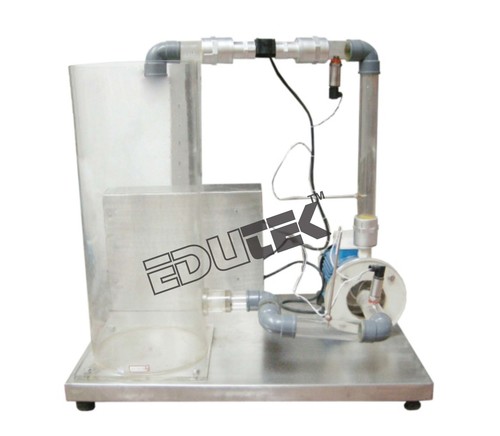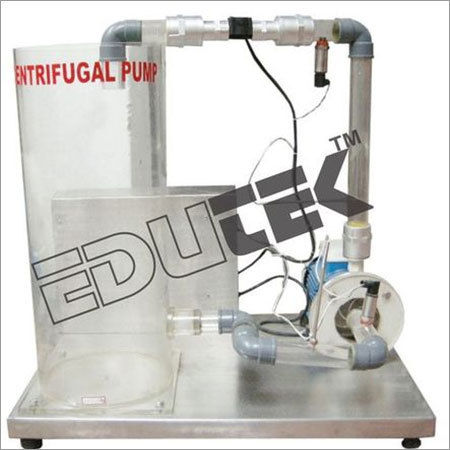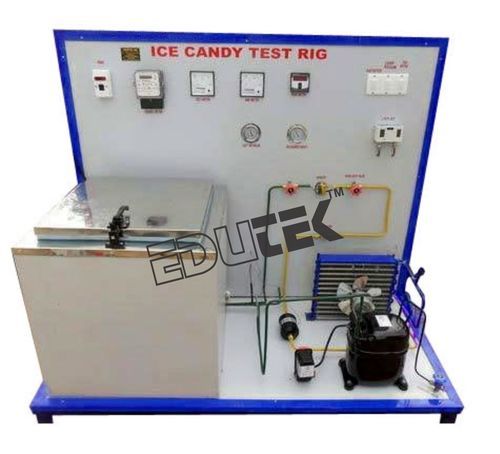Experiments With A Piston Pump
Product Details:
X
Product Description
EXPERIMENTS WITH A PISTON PUMP
Piston pumps belong to the group of positive displacement pumps. They transport the medium by a reciprocating motion of a piston in the pump working space, called stroke. The stroke creates a suction hence vacuum effect used to deliver the water. Piston pumps are used when high pressures are to be generated. The flow rate of piston pumps is independent of the head and is determined only by speed. Its good suction performance is outstanding. The experimental unit provides the basic experiments to get to know the operating behaviour and the important characteristic variables of piston pumps.
features a closed water circuit with water tank, a piston pump with variable speed via a frequency converter and an air vessel. The piston of the pump is mounted in a transparent housing and can be observed during operation. The cycle that takes place (intake and discharge of water) can be shown clearly in the p-V diagram. The pulsating pressure curve of the pump can be damped with the aid of the air vessel. Flow rate and head are adjusted via a needle valve and overflow valve.
The experimental unit is fitted with sensors for pressure and flow rate. One pressure sensor measures the pressure at the outlet of the pump, another one measures the pressure in the inside of the cylinder. The position of the piston rod is measured by an angle sensor. This allows the determination of the cylinder volume. The microprocessor-based measuring technique is well protected in the housing. All the advantages of software-supported experiments and software and the microprocessor. The connection to a PC is made by USB.
The well-structured instructional material sets out the fundamentals and provides a step-by-step guide through the experiments.
Learning Objectives / Experiments
- Principle of operation of a piston pump
- Recording of pump characteristics
- Pressure curves of delivery pressure and cylinder pressure
- Influence of pulsation damping p-V diagram
- Determination of efficiencies
Specification
- Functioning and operating behaviour of a piston pump
- Closed water circuit contains piston pump with variable speed via frequency converter, transparent water tank and air vessel
- Transparent housing for observing the pump piston
- Needle valve for adjusting the flow rate
- Overflow valve for adjusting the head
- Pulsation damping of the head using air vessel with bleed valve
- Sensors for pressure at outlet and in the cylinder of the pump, flow rate and crank angle
- Microprocessor-based measuring technique
- Unit-specific software for data acquisition and operation via USB under Windows Vista or Windows 7
Technical Data
Piston pump
- Speed: 30...180min-1
- Max. flow rate: 135L/h
- Max. head: 40m
Drive motor
- Power: 180W
- Gear transmission ratio: i=7,5
- Overflow valve: 1...4bar
Measuring ranges
- Pressure (cylinder): 0...5bar
- Pressure (outlet): 0...5bar
- Crank angle: 0...360°
- Flow rate: 0,2...6L/min
Dimensions and Weight
- LxWxH: 680x595x770mm
- Weight: approx. 52kg
Tell us about your requirement

Price:
Quantity
Select Unit
- 50
- 100
- 200
- 250
- 500
- 1000+
Additional detail
+91
Email
Other Products in 'Fluid Mechanics Lab Equipment' category
"We deal all over World but our main domestic market is South India"
 |
EDUTEK INSTRUMENTATION
All Rights Reserved.(Terms of Use) Developed and Managed by Infocom Network Private Limited. |














